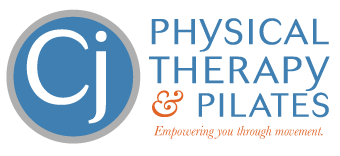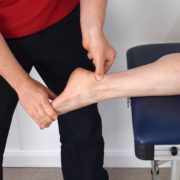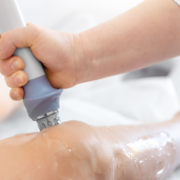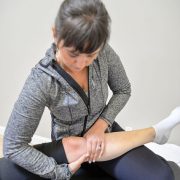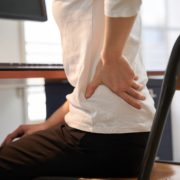Arthritis Pain Isn’t the End – How to Stay Active for the Long Haul
Arthritis is one of the most common conditions I see in my clinic – and one of the most misunderstood.
Many people assume it’s just an inevitable part of aging, but what’s often overlooked is how much can actually be done to manage it naturally and effectively.
What frustrates me most is the message many people still hear – that arthritis pain is something you just have to “live with,” managed only through pills, injections, or eventually surgery. But the truth is that while arthritis may not be something you can erase or reverse – there are countless ways to manage your symptoms naturally, safely, and effectively – without becoming dependent on quick fixes that often backfire in the long run.
Here are just a few of the approaches I recommend to my patients who want to stay active and independent well into their later years – even with arthritis.
Move Every Day (Even When You Don’t Feel Like It)
When your joints ache, movement is usually the last thing you want to do. But ironically, it’s one of the best things you can do. Gentle, consistent exercise increases circulation, nourishes your cartilage, and keeps inflammation from settling in. Walking, biking, or swimming are excellent choices because they don’t put excess stress on your joints. Practices like yoga or Pilates improve balance and mobility, making daily activities easier and reducing the strain on your joints. And strength training – despite what many believe – is actually good for arthritis because it takes pressure off your joints by making the muscles around them stronger.
Even five to ten minutes of daily activity can mean the difference between feeling stiff all day or moving with more freedom. The less you move, the worse arthritis tends to get – so finding ways to stay active is one of the best investments you can make in your future health.
Fuel Your Body With Anti-Inflammatory Foods
What you eat matters. An anti-inflammatory diet can help reduce the swelling and stiffness that drive arthritis pain. Omega-3 rich foods like salmon or flax seeds, antioxidant-packed fruits and vegetables, and spices such as turmeric and ginger all have powerful healing effects. At the same time, cutting back on processed foods, refined sugars, and fried items can significantly improve how your joints feel – and it brings benefits for your overall health as well.
Think of food as medicine, because for arthritis it truly can be. Many of my patients notice a big difference in their pain levels and energy simply by reducing sugar and processed foods while adding more colorful fruits, vegetables, and healthy fats.
Prioritize Weight and Posture
Every extra pound you carry puts additional strain on your hips, knees, and back. Even small amounts of weight loss can dramatically reduce pressure on your joints and give you noticeable relief. But here’s something many people miss – posture can play just as big a role.
When you sit, stand, or walk with poor posture, you create uneven forces through your joints. Over time, this increases wear and tear, and can be aggravating to an already arthritic joint. Learning how to align your body correctly can protect your joints just as effectively as losing weight. The way you move every day, whether you’re getting out of a chair or bending to pick something up, can either help your arthritis or make it worse.
Don’t Let MRIs or X-rays Dictate Your Treatment
One of the biggest mistakes I see is when people let imaging results control their decisions. While MRIs and X-rays are useful in certain situations, they are not the whole story. Numerous studies have shown that people with severe degenerative changes on their scans often have no pain at all. In fact, research suggests that as many as 60–70% of people over the age of 50 show some level of arthritis or disc degeneration on imaging – even if they feel perfectly fine.
This matters because once you’re told your pain is due to what’s seen on a scan, you’re far more likely to be funneled toward procedures you may not need. Cortisone injections, for example, only mask pain and actually weaken tissue when used repeatedly. Arthroscopic surgery for knee arthritis has been shown to accelerate the very degenerative changes it’s supposed to help.
And then there’s the dreaded phrase: “bone-on-bone.” While this sounds scary, it does not automatically mean you need a joint replacement. Many people live full, active lives with joints that appear “bone-on-bone” on imaging, as long as they are moving well and keeping their surrounding muscles strong. If you rely only on what the picture shows, you risk missing out on safe, natural solutions that can help you stay mobile and independent.
Explore Longevity Treatments that Boost Healing
One of the most exciting developments in arthritis care right now is the rise of non-invasive therapies that actually help your joints heal and last longer. The combination of Shockwave Therapy (ESWT) and EMTT (Extracorporeal Magnetotransduction Therapy), for example, helps to stimulate blood flow, reduce inflammation, and restore mobility at the cellular level deep inside your joint.
Unlike cortisone shots, which only provide temporary relief while weakening tissue, these therapies encourage your body’s natural ability to repair itself. Many of my patients have experienced less pain, more mobility, and faster recovery – without downtime or drugs. Instead of masking symptoms, these treatments support long-term joint health and help you stay active well into the future.
A Final Word of Encouragement
If you live with arthritis – it doesn’t mean you are destined for a life of pain or dependence on invasive treatments or pills. Your body has an amazing capacity to heal when given the right environment. Whether it’s moving a little more each day, adjusting your diet, improving your posture, questioning unnecessary procedures, or exploring longevity treatments – there are always steps you can take to improve your quality of life.
Arthritis may be common, but it doesn’t have to define you or your future.
With the right strategies, you can stay active, independent, and doing the things you love for years to come. Local to Portsmouth, NH and looking for help?
Consider speaking to one of my specialists. CLICK HERE to book a free discovery visit.
Dr. Carrie Jose, Physical Therapy Specialist and Mechanical Pain Expert, owns CJ Physical Therapy & Pilates in Portsmouth, NH, and writes for Seacoast Media Group. If local to Portsmouth, NH, and looking for help, request a FREE Discovery Visit with one of her Specialists by CLICKING HERE.
